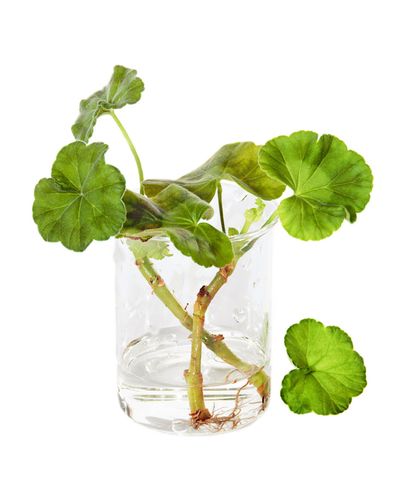What is Geranium Cutting Rot?
Rotten geranium cuttings are the result of bacterial and/or fungal cut geranium diseases. Stem rot is usually caused by bacteria while root rot is the result of fungal infection.
Symptoms of Rot on
Geranium Cuttings
Bacterial stem rot on geranium cuttings results in black, weakened stems that eventually wilt and die. Geranium cuttings rot as the result of a fungus attacking the roots, causing them to rot and kill off the plant.
How to Control Cut Geranium Diseases
Geraniums propagated by cuttings are susceptible to a number of soil-borne organisms. It is of utmost importance to properly handle the plants to prevent infections of cut geranium diseases. Excellent sanitation methods are the key to preventing infections of cut geranium diseases. Wash your hands prior to handling the plants to prevent the spread of bacteria and fungi. Also, disinfect your tools with a solution of 1 part bleach to 9 parts water. Before planting cuttings, treat the cut stem with a fungicide to reduce the risk of rotten geranium cuttings. Also, allow the cutting of geranium to cure prior to planting; this will reduce the risk of disease. Lay cuttings on damp sand in the shade for a few hours to allow the cut wound to heal over. Water the geranium plants so the soil is moist but never soggy, as this fosters cut geranium diseases. Rotten geranium cuttings are more likely to happen if the pots they are in have inadequate drainage. Avoid wetting the foliage when watering. Keep an eye out for any insect activity on the plants, as insects can spread disease from plant to plant. Either hand pick or treat insect populations with an insecticidal soap or a pesticide recommended for the specific insect. If a plant exhibits signs of rot on geranium cuttings, dispose of it immediately. Do not compost them because the diseased organism may survive during composting.
